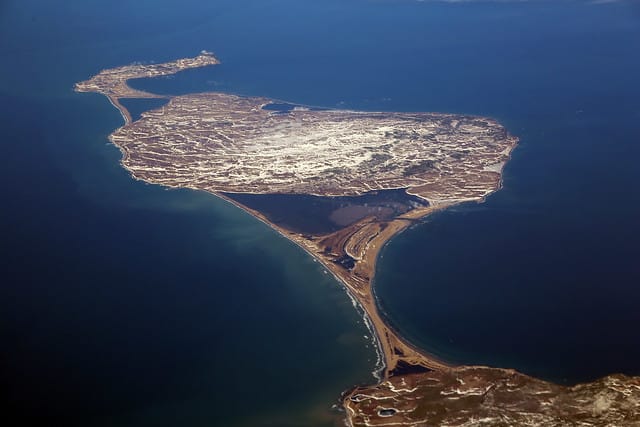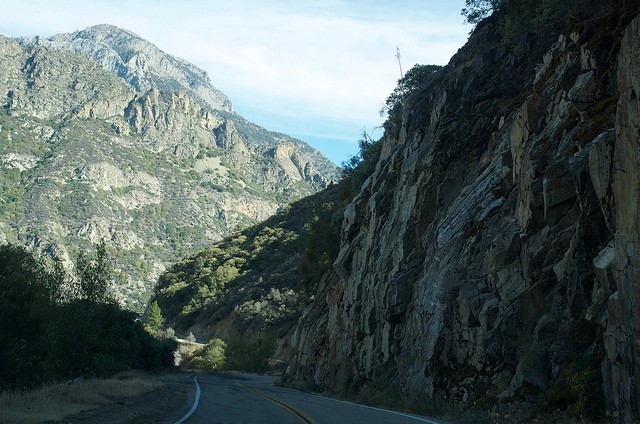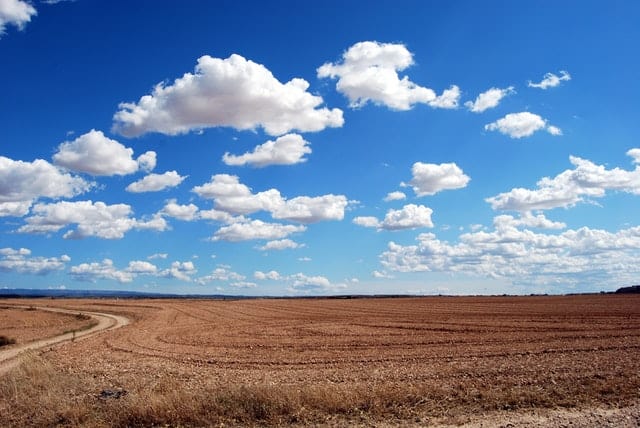What are Gold Nuggets: Formation, Composition and Largest Gold Nuggets

Of all the 118 elements in the periodic table, gold has captured the minds and motivations of mankind. And, of all the forms taken by gold, gold nuggets stand out the most. Perhaps this is owed due to its inherent rarity, or the tantalizing color. Whatever it is about gold nuggets, pirates to miners are all crazy about it.
Photo by: DepsitPhotos
What Exactly are Gold Nuggets?
Gold nuggets are the giant lumps of native gold found in soils and stream beds. Nuggets are usually 70 to 95 percent gold, and the remainder mostly silver. Today, less than 2% of all gold recovered comes from the nuggets.
Gold Nuggets are the reason Gold rush started in the 1850s from California and Alaska to South Africa and Australia.
How Does the Gold Nuggets Form?
The origin of nuggets is a matter of debate. Most of the gold nuggets found so far were formed as clusters of gold from very hot water in cracks and fissures in hard-rocks, often with quartz. Over time, they weathered and ended up in water bodies due to gravity.
Some theories regarding nugget formation:
1. Theory of Erosion
Earlier it was believed that gold nuggets were formed in gold-rich reefs as they eroded over time. The famed Victorian nuggets of Australia were believed to be formed by erosion because of the abundance of quartz in them.
2. Theory of Precipitation
According to this theory, nuggets are formed near the surface as gold particles precipitated from solutions arising from weathering of old gold deposits. A gold colloid is created through soluble gold complexes saturated with hydrothermal fluids which then allowed gold particles to be moved into the suspension fluid. The colloidal grains then accumulate until they become gold nuggets.
3. Theory of Biofilm
Nuggets are said to be formed after bacteria dissolve gold into nanoparticles which move through rocks and form clumps or aggregates. A bacterium called Cupriavidus metallidurans creates such nuggets.
According to a 2007 report, bacteria and archaea are found to be the driving force of solubilizing and precipitating gold.
4. Theory of Crystallization
According to this, nuggets are formed deep under the earth’s surface at extreme temperature and pressure. Later, the formed tiny gold molecules join together and form crystalline nuggets.
Other theories:
• Another theory suggests the gold nuggets form because gold is sticky, bendable, and malleable. During weathering and transportation, smaller gold crystals (or particles) may stick together by pressure and end up in a slope or stream bed.
Shearing and hammering create small gold nuggets and then they are bound together by squeezing, hammering, and shearing in moving gravels. Interestingly, often gold particles get bigger as nuggets for a few miles downstream of the primary source of gold.
• Gold nuggets form when groundwater rich in gold deposits gets precipitated in soils and gravels.
• Gold nuggets may come from old placers, known as paleoplacers, being eroded. These places might be just a few hundred years old or be millions of years old.
Composition of Gold Nuggets
Gold nuggets are usually marked 20K to 22K pure, containing 83% to 92% gold. Certain nuggets unearthed from Australia are 23K or even higher. Sometimes nuggets are referred to by their fineness; for instance, “865 fine” means the nugget is 865 parts per thousand in gold. Silver and copper are the most common metals present in nuggets.
Are Gold Nuggets Pure Gold?
Geography and the composition of the original vein determine the purity of gold nuggets. Most nuggets are between 70 percent to 95 percent pure gold; they are never 100% pure as they are in the native state usually mixed with several kinds of metals and minerals. Copper, silver, nickel, quartz, etc are the common impurities found in a freshly unearthed nugget.
The metals and minerals determine the color, luster, and shine of a nugget. For example, nuggets in laterite are either reddish or black; nuggets in quartz are cloaked with white.
As a general rule, the richer and deeper the yellowish-orange color, the higher the gold content.
Where are Gold Nuggets Found?
Finding a gold nugget is no easy task. The thing is, even a mining area is historically rich in gold, they don’t always have chunkier nuggets. In fact, there are mining areas producing billions of dollars in gold, but not a 1gram gold nugget.
That said, there are places where gold nuggets can be found.
1. Alluvial deposits
2. Creeks and rivers – Erosion and high specific gravity of gold accumulated the nuggets in waterways.
3. Abandoned gold mines – gold lodes or veins exposed by weather may have gold nuggets.
4. Hard rock gold deposits – but extraction is a bit difficult.
5. Deserts and areas producing coarse gold may also have nuggets that you can find.
Gold Nuggets around the world
Most of the world’s biggest gold nuggets come from the goldfields in Brazil, Australia, Russia, and America. Countless nuggets have also been unearthed from South Africa, Sweden, Venezuela, and Algeria.
In the USA, about two-thirds of the country’s gold is mined in California, Alaska, Nevada, and the very famous Yukon Gold nuggets in British Columbia. Also, South Dakota generates a considerable amount of gold. Victorian nuggets from Australia, especially Bendigo Gold nuggets, contain at least 95% Gold.
Largest Gold Nuggets In The World
Many historical gold nuggets are now just legends as most were melted down into gold bars or coins. Below are the largest gold nuggets that are still in one piece; and are on display for the public.
1. The Pepita Canaã
• Gross Weight: 60.82 kgs (with 52.33 kgs or 1682 troy ounces of gold)
• Discovered By: Júlio de Deus Filho
• Year Discovered: 1983
• Location of Discovery: Brazil
Discovered during Brazil’s Serra Pelada – Gold Rush, Pepita Canaã is the largest gold nugget in the world. In 1984, the Banco Central do Brasil purchased this eye-popping chunk of gold. It is also known as Canaan Nugget. Notably, the source nugget from which Pepita Canaã nugget came from is said to have been quite larger but regrettably broke into several pieces during extraction.
Currently, the “Canaan” gold nugget is displayed in the “Gold Room” of the bank’s money museum – the Museu de Valores do Banco Central.
2. The Great Triangle
• Weight: 36.2 kg (with 32.94 kg or 1059 troy ounces of gold)
• Discovered By: Nikofor Syutkin
• Year Discovered: 1842
• Location of Discovery: Russia
The Great Triangle is the second largest surviving gold nugget in the world. In 1842, it was dug up from roughly 3.5 meters in the Miass area of the Russian Urals mountains. When found it was a triangular piece (31*27.5* 8cms) hence the name.
Now the Great Triangle is a prominent exhibit in Russia’s Diamond Fund display along with their other exquisite stones and metals owned by the Kremlin.
3. Hand of Faith
• Weight: 27.66 kg (875 troy ounces of gold)
• Discovered By: Kevin Hillier
• Year Discovered: 1980
• Location of Discovery: Victoria, Australia
This gold nugget has the distinction of being the largest gold nugget discovered using a metal detector. Kevin Hillier found the nugget using a 14-inch search coil on his detector in on the 26th. September 1980. Many mistake Hand of Faith as a relic of the American Gold Rush, but it was found in the area of Kingower, Victoria, Australia.
The Hand of Faith was sold to the Golden Nugget Casino in Las Vegas, Nevada, the USA where it is still questionably displayed as the world’s largest surviving gold nugget.
4. Normandy Nugget
• Weight: 25.5 kgs (820 ounces of gold)
• Discovered By: Loo Ching
• Year Discovered: 1995
• Location of Discovery: Australia
Normandy Nugget, the world’s fourth-largest gold nugget is an Australian beauty. When found in 1995, it was uncovered in a dry creek bed in a mining center of Kalgoorlie, Western Australia.
The purity of the Normandy Nugget is between 80% and 90%, which makes it worth many million dollars. It is currently owned by Normandy Mining, which is now part of Newmont Gold Corporation and is on a long-term loan for display in the Perth Mint museum, Western Australia.
5. Ironstone’s “Crown Jewel”
• Weight: 16.4kg (527 troy ounces of gold)
• Discovered By: Sonora Mining Corporation
• Year Discovered: 1992
• Location of Discovery: California.
Ironstone’s Crown Jewel is quite unique in that it is a single piece of crystalline leaf gold. The gold was embedded in quartz when it was found in Jamestown, California on Christmas Day in 1992. The originally unearthed piece weighed about 63 troy pounds, but after removing much of the quartz matrix it ended up weighing roughly 44 troy pounds. The purity of gold was found to be 98%.
Now on display at the Ironstone Vineyards, Murphy, California, this ethereal nugget is also called as the ‘Kautz Crystalline Gold Leaf Specimen’ in reference to John Kautz, the owner of Ironstone Vineyards.
References:
http://crcleme.org.au/Pubs/Monographs/regolith2004/Butt&Hough.pdf
https://www.researchgate.net/publication/42428324_Gold_nuggets_Supergene_or_hypogene
https://www.moscow-driver.com/photos/moscow_sightseeing/diamond_fund/great_triangle_nugget






